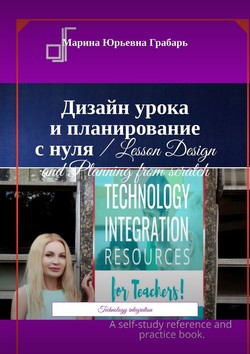Читать книгу Дизайн урока и планирование с нуля / Lesson Design and Planning from scratch. Technology integration - Марина Юрьевна Грабарь - Страница 9
Lesson Improvement Tips
Оглавление1) Think Outside (No Box Required)
Try exploring the ways animals adapt to winter, learning about air pressure, or creating a comet. Learning outside can involve the senses in ways the classroom doesn’t, lending itself well to creative forms of expression suited for art, literature or English classes as well.
2) Start at the Test (And Work Your Way Back)
Staying on target with your objectives throughout the year is typically based on how you’re able to bring learning outcomes together along the way. In a list of assessment writing tips compiled by Brown University, researchers cited the importance of assessments as part of the learning process. Knowing ahead of time how you plan to assess students on a given topic can be an incredibly valuable tool in lesson planning. For your students, it may be the «end» of the process, but for you, it’s the starting point and can help create an effective outline of talking points throughout your lesson plan to ensure nothing is missed along the way.
3) Keep the Bigger Picture in Mind
Sometimes it takes getting back to basics to head in the right direction. That means focusing on what you need to accomplish in the long-term, learning from experiences along the way, and staying focused throughout.
It’s important to remember each piece of the puzzle is created differently on purpose. Just as each student will bring a unique perspective to the larger group, each lesson plan is a necessary element of the end goal. Sometimes things will work, other times they won’t. Some lessons will run smoothly and others will flop. But the ability to stay focused on the piece that plays in the bigger picture at the end of the school year will increase the productivity and effectiveness of the entire process.
The components of a well-constructed lesson plan may vary slightly from one topic to another, but each should include a warm-up activity, introduction, practice activity, production, and review. An article in Busy Teacher walks through some suggested steps of writing a lesson plan, focusing on how each step comes together over the course of a school day, and how each school day comes together over the course of a school year.
It’s best to help get students in the right frame of mind, to begin with, and start by helping them understand what it is they will be learning. Practice and production are also key and should involve work on the student’s part to learn more about the topic. And a review is necessary to bring everything full circle in a way that not only stays with the students but also could be replicated by another teacher someday.
4) Stay Flexible
This may seem to contradict the previous insights of this article, but it is just as important as everything else. Making adjustments as you go is a necessary component to proper lesson plan execution. This will obviously depend greatly on the makeup of students, their personalities, their learning styles, and how each of those things comes together into the overall classroom environment. The best place to start is in knowing each individual so you are equipped to anticipate some of the necessary changes instead of reacting to them at the moment. That could involve stepping outside your comfort zone by trying a new activity for something you’ve taught the same way multiple years in a row. Other teachers are a great place to start, but there are also so many resources onlinefor any grade level and subject area. Sometimes being flexible in the classroom means stepping outside your comfort zone to accomplish what’s best for the students.
5) What Would You Do?
Put yourself in your students’ shoes. What were you curious about when you were their age? What questions did you have about a topic? What interests you most? What do you still want to know? All of these questions are excellent things to ask yourself if you end up in a lesson planning block.
Classrooms have obviously changed in some pretty fundamental ways since most of us were in school, but that doesn’t take away from the basics of imagination, creativity and a thirst for learning. One way to embrace a changing environment is to find new ways to integrate technology into your lesson plans. There are several things to consider when evaluating Edtech in the classroom, but it’s a best practice to keep an open mind to trying something new as often as you’re comfortable.
